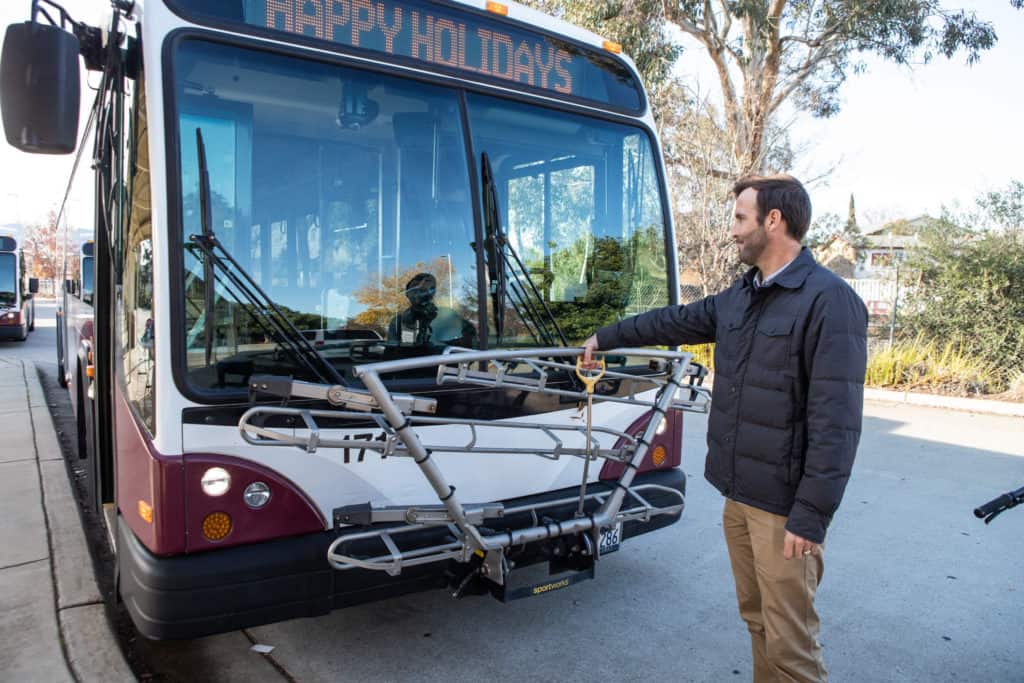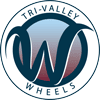RIDING WHEELS
IS A BREEZE
Know the Rules
Wheels has established policies to keep customers and operators safe on board our buses and at our bus stops.
Learn how to ride the bus in a few easy steps:
1. Arrive early at your bus stop.
Arrive at your bus stop at least 5 minutes early. Check the sign for the route(s) that serve the bus stop. Wait near the sign or the curb where the bus operator can easily see you.
2. Be prepared to board your bus.
Be ready to board with exact cash fare or a valid ticket, pass or Clipper Card. Cash and tickets can be deposited into the farebox on board the bus.
3. Check the route on the bus before boarding.
As the bus approaches, check the route number above the windshield to make sure it’s the line and destination you want. Signal the operator that you wish to board by waving your hand and making yourself visible.
4. Stand back and wait.
Stay back from the curb and wait until the bus comes to a complete stop. If you need to use a boarding ramp, just ask the operator.
Stay safe near the bus:
- Never cross the street in front of a bus unless it’s stopped at a red light.
- Keep your children close to make sure you don’t get separated.
- Wheels buses only stop at designated bus stops.
5. Board and pay. Be prepared to pay your fare or show your pass before you board the bus. If your trip requires a transfer to another bus, payment with a Clipper card includes a free transfer within 120 minutes of first fare payment. After paying, move to a vacant seat or towards the back so others can board.
6. Pay attention to your stop when you’re riding.
Along the route, we’ll announce and post on the bus interior display the next major stops and intersections. If you’re not familiar with the area, you can ask the operator to announce your destination.
7. Signal the driver before reaching your stop.
When you want to exit the bus, pull the stop request cord to signal the driver at least a block before your stop.
8. Be ready to exit before reaching your stop.
Gather all your personal items and stand near the rear exit door so you’re ready to exit. After you step off the bus, stand to the side of the road or sidewalk until the bus has completely pulled away.
Bring your wheels on Wheels
All of our buses are equipped with bike racks to accommodate cyclists. Each bike rack holds two bikes and space is available on a first-come, first-serve basis.
Prepare your bike
- Before the bus arrives remove loose items that could come off your bike while the bus is in motion. Take these items with you inside the bus.
- Notify the bus driver before loading the bike.
- Load and unload bikes from the side of the bus nearest the curb.
- Take caution when loading and unloading your bicycle. Wheels is not responsible for any damage that may be caused while your bike is being loaded/unloaded or while it is in the rack.
- Exit the bus from the front door and let the bus driver know that you will be unloading a bike.
Loading your bike is as easy as 1-2-3

1. Lower the rack.
To lower the rack, grasp and squeeze the handle with one hand while supporting the bike with your other hand. Slowly lower the rack.

2. Place your bike on the rack.
Lift your bike into the rack, placing the wheels in the wheel wells. The first bike loaded should be placed in the position closest to the bus. The bike’s front wheel is in the proper position when it is facing the support arm.

3. Secure your bike.
Your bike is secured with the support arm. Pull the support arm handle out, then lift it up and over the bike’s front tire. Release the handle so that it rests on the tire. Your bike is now secure and you can board the bus.
Unloading your bike in 3 easy steps

1. Pull the support arm.
Pull the support arm handle out and lower it down over the bike’s front tire.

2. Lift the bike out of the rack.
It makes no difference which position your bike is in. You can easily remove your bike from the rear position even if another bike is in the front position.

3. Return the rack to the upright position.
Once your bike has been removed, return the empty rack to the upright position.
Bikes on board
If the bike racks are full, you may bring your bike on board.
LAVTA is not responsible for damages incurred or caused to bicycles while on the transit system or at a bus stop, or during loading or unloading of the bicycle or cyclist loading and unloading the bike. The bike rider is responsible for any damage caused by the cyclist while loading or unloading the bike to the rack and/or if they fail to secure the bicycle on the rack properly.
There is no guarantee there will be space for your bicycle when the bus arrives. If the bicycle rack is full, the driver will allow the bicycle to be brought inside the bus if there is room in the wheelchair securement areas and the driver determines the bicycle can be secured and controlled safely. If additional passengers or a passenger with a mobility device boards the vehicle, you may be asked to leave the bus with your bicycle and wait for the next bus.
Folding bikes are welcome on board.
Bicycles that can be folded are welcomed on board all Wheels buses as long as the passenger can control the bicycle.
Helpful tips for customers with strollers
Boarding the bus with a stroller can be difficult when you have to fold and stow upon boarding. Wheels now provides a designated area for strollers, which means that you and your child can ride with greater ease and comfort. This designated area is located on most Wheels buses behind the wheelchair area and can accommodate a maximum of two strollers or a personal shopping cart.
- Before boarding, remove all loose items that could fall off of the stroller (bags, water bottle, etc.).
- Ask the driver to deploy the boarding ramp if necessary.
- Take your seat immediately upon boarding and place the stroller in front of you. Stroller wheels must be in the locked position and must be in control of the owner at all times.
- If the stroller area is full, you may place your stroller in the wheelchair area and secure it with the restraints.
- If a passenger with a mobility device boards, you will be asked to fold your stroller and move to a regular seat.
Helping paws welcome
Service animals used for mobility assistance are welcome on Wheels buses.
The following service animal regulations must be followed:
- Service animal owners are required to pay a full fare except when presenting a Regional Transit Connection (RTC) Discount Card, Medicare Card, Wheels ADA Paratransit ID Card, or DMV placard identification card.
- All service animals must be on a harness and sit on the floor out of the aisle.
- Owners must have full control of their service animal and are liable according to the law.
- Service animals may not pose a threat or danger to other riders.



